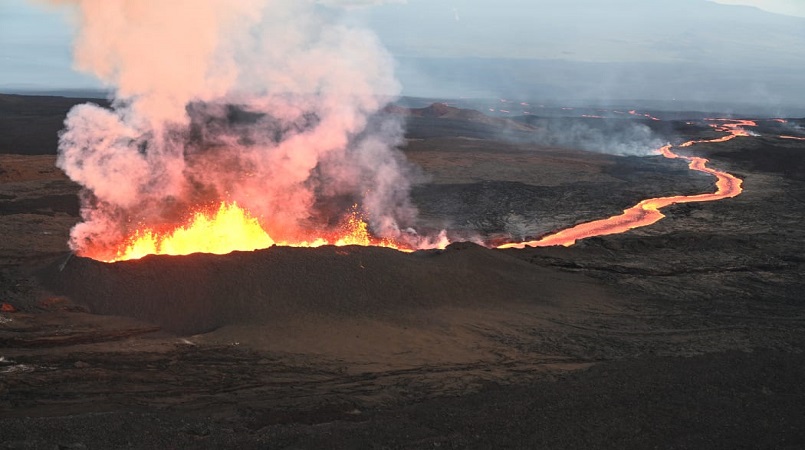
In Hawaii, lava flowing from Mauna Loa volcano continues to move slowly towards a major highway.
The United States Geological Survey (USGS) reports the lava river has slowed down but continues to be fed from the erupting volcano.
In its latest update, the USGS reports the lava river is moving at an average of 6metres per hour.
The USGS said the most significant fissure is feeding a lava flow advancing slowly northward toward the Daniel K. Inouye Highway.
The lava flow has reached relatively flat ground causing it to spread out in three directions and slow down significantly over the past several days.
As of 6.30am local time on December 5, the flow front was about three-and-a-half kilometres from the highway.
"Over the past day, there continued to be several small overflows from main channels, and the lava flow advanced at an average rate of about 8 meters per hour. Though the advance rate has slowed over the past several days, the lava flow remains active with a continuous supply from the fissure 3 vent," the USGS said on its Facebook page.
"Lava flow advance rates may be highly variable over the coming days and weeks, and individual lobes may advance quickly and then stall. Additional breakouts may occur if lava channels get blocked upslope. Many variables are at play, and the direction and timing of flow advances are expected to change over hours to days, making it difficult to estimate when or if the flow will impact Daniel K. Inouye Highway."
The USGS said volcanic gas plumes are lofting high and vertically into the atmosphere before being blown to the west at high altitudes, generating plumes in areas downwind.
Mauna Loa is the largest active volcano in the world, and has been erupting since November 28.
The USGS is providing a livestream of the eruption on its website.
